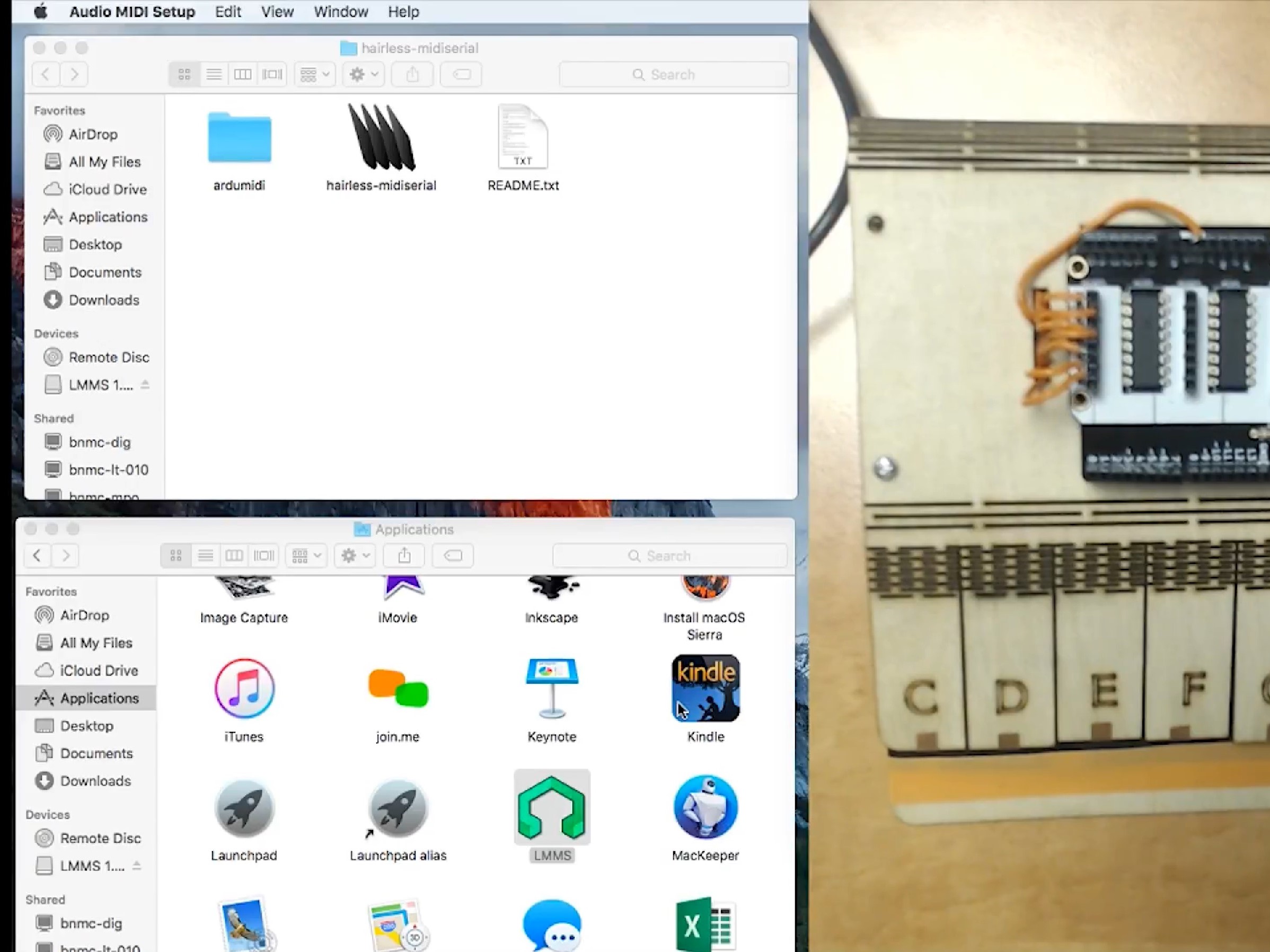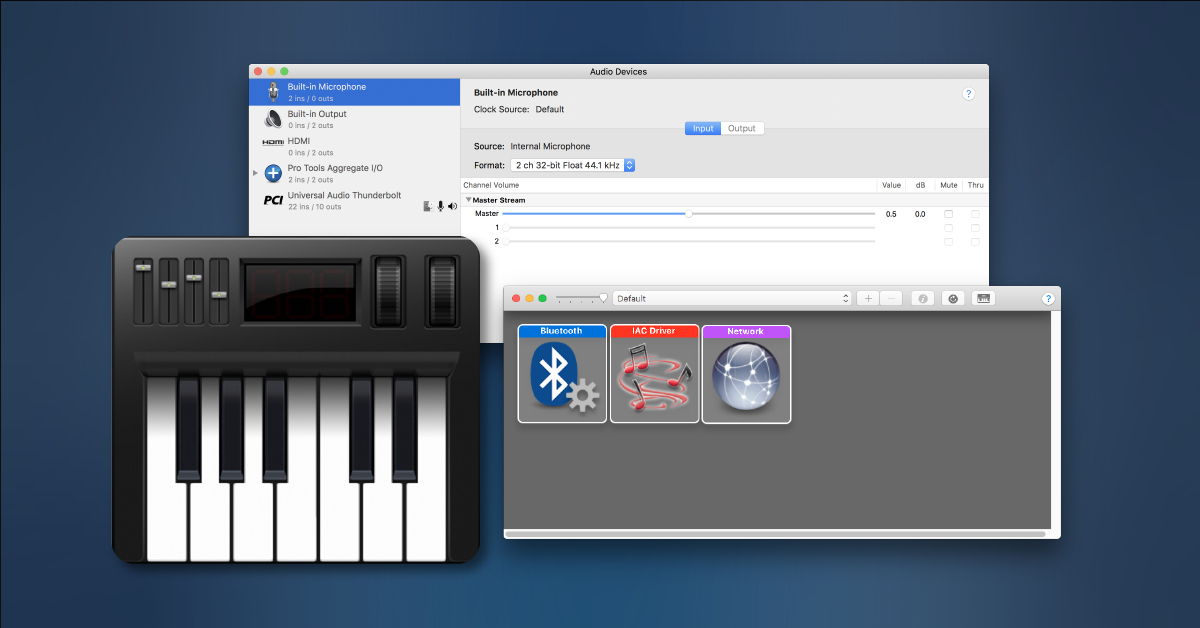- Audio Midi Setup Macbook Pro
- Audio Midi Setup App Windows
- Audio Midi Setup Mac Download
- Audio Midi Setup Mac Download
Set up audio devices in Audio MIDI Setup on Mac. Use Audio MIDI Setup to set up audio input and output devices, such as microphones and multichannel audio interfaces. You can also use it to route audio from iOS and iPadOS devices directly into your Mac. Available settings in Audio MIDI Setup depend on the audio device you’re using. Download the latest version of BlackHole for Mac - Virtual audio driver. Read 4 user reviews of BlackHole on MacUpdate. Download (69 KB). Audio Midi Setup. Open the Audio MIDI Setup application on your Mac and go to the Audio Devices window. Click on the plus icon at the bottom left of the window to create a new Aggregate Device, then double click in its name field and assign it a name.
Drivers & Software Updates Search
Do you have the latest drivers for your device? Our engineering team is constantly adding, updating and improving our drivers to ensure optimal performance.
Latest Updates
Driver Updates
| Product | Version | Date | File Download |
|---|
Firmware Updates
| Product | Version | Date | File Download |
|---|---|---|---|
| Accent Module | 1.00.09 | 12-19-2018 | Accent Module Firmware Update v1.00.09 |
| Code 25 | 1.3.0 (FW v1.0.4.4) | 10-24-2018 | Code 25 Firmware Update for Windows v1.3.0 |
| Code 49 | 1.3.0 (FW v1.0.4.4) | 10-24-2018 | Code 49 Firmware Update for Windows v1.3.0 |
| Code 61 | 1.3.0 (FW v1.0.4.4) | 10-24-2018 | Code 61 Firmware Update for Windows v1.3.0 |
| Code 25 | 1.3.0 (FW v1.0.4.4) | 10-24-2018 | Code 25 Firmware Update for Mac v1.3.0 |
Software Updates
| Product | Version | Date | File Download |
|---|---|---|---|
| Hammer 88 | 1.0.8 | 02-04-2020 | Hammer 88 Preset Editor for Mac 1.0.8 |
| Code 25 | 1.0.8 | 10-16-2019 | Code 25 Preset Editor for Mac 1.0.8 |
| Code 49 | 1.0.8 | 10-16-2019 | Code 49 Preset Editor for Mac 1.0.8 |
| Code 61 | 1.0.8 | 10-16-2019 | Code 61 Preset Editor for Mac 1.0.8 |
| Hammer 88 | 1.0.7 | 02-21-2018 | Hammer 88 Preset Editor for Windows 1.0.7 |
MUSC 208. Computer Music and Sound. Winter 2014
[Syllabus]
Mac Laptop MIDI Setup for ChucK
Additional Installs
Au Lab
Au Lab can be found in the course Common folder. Choose the version that corresponds to the Mac OS X version you are using. To install, drag the Au Lab icon into the /Applications folder.
Au Lab instructions below beginning with Audio MIDI Setup.
Soundflower
Soundflower was used in Lab 4, p. 41 ff. It describes a modified Au Lab setup to the one presented here.
Audacity 2.0.5
Audio MIDI Setup

Open Audio MIDI Setup
The Audio MIDI Setup (AMS) application is found in the /Applications/Utilities folder.
Shortcut: Apple-Shift-U in the Finder.
Choose Show MIDI Window from the Window menu if it is not already open.
You'll need to create a new AMS configuration for yourself. Choose New Configuration from the Configuration popup menu.
Name the new configuration m208 and Click OK.
In the MIDI Studio window you'll need to Activate the IAC (Inter Application Communication) Driver. In this picture it's shown as a deactivated gray icon.
Double click the IAC Driver icon in the MIDI Studio window. Make sure the 'Device is online' checkbox is checked.
Close the Window.
The IAC Device icon should be displayed in its active state (not grayed out). You may have to use the Confuguration popop menu and switch to Default and then back to m208 to see the change.
Close AMS.
AU Lab Setup
Note: These screen shots are from Au Lab 2.2.1 running on Mac OS X 10.7.5.
Audio Midi Setup Macbook Pro
Open AU Lab.
If the following window does not appear skip to New Configuration from the File menu.
Click Next.
Click Next.
New Configuration
Click Create Document. An Untitled window will appear.
Choose Add Audio Unit Instrument from the Edit menu.
Make these settings n the dialog that appears:
- select the 'IAC Driver' or 'Any MIDI Controller' for your MIDI Input Source
- select DLSMusicDevice for instrument.
Click OK.

The main AU Lab window has added a second Output strip ...
and the Stereo Mix: DLSMusicDevice window will appear.
Choose MIDI Editor from the far right drop down menu.
The MIDI Editor window will appear.
Click and hold on Channel box 1 and drag the mouse to the right until channels 1-16 are selected.
Close the window by clicking the red button at the top left of the window.
Choose Save As from the File menu.
Making the Changes Semi Permanent
In the Save As dialog save this file as m208.trak.
Click Save.
Choose Preferences from the AU Lab menu.
Click the Documents tab in the Preferences dialog. Select the 'Open a specific document:' radio button. Then click the Choose... button. When the File Open dialog appears, navigate to the YOUR_DRIVE. Select your AULabDLS.trak file and click Open.
Close Preferences. Quit and restart AuLab. The m208.trak file should open automatically with the correct settings.
ChucK and MIDI
Important: You must start AuLab before starting miniAudicle or Terminal if you're running ChucK in the Terminal.
Open Au Lab
Open /Applications/Au Lab
Open Terminal and Type chuck —probe
At the end of the output you'll see all MIDI inputs and outputs ChucK can find. In this case it found one input and two outputs.
IAC Driver Bus 1
Input and Output [0] use the IAC driver. IAC stands for Inter Application Communication and is part of MacOS. The IAC Driver allows you to connect ChucK to many commercial MIDI applications like GarageBand, LogicPro, Abelton Live, Reaktor, Reason, and others. ChucK can use this.
Audio Midi Setup App Windows
DLSMusicDevice
This is the General MIDI software synthesizer supplied by Apple and is part of MacOS. ChucK can use this.
Audio Midi Setup Mac Download

Quick ChucK MIDI Output Test
Enter and run this code in miniAudicle.
Recording ChucK Audio
Audio Midi Setup Mac Download
The above discussion only applies when ChucK is playing MIDI. When ChucK is generating audio you can use ChucK's wvOut class as described in Lab 4, ABC Song.
Revised John Ellinger, Winter 2014